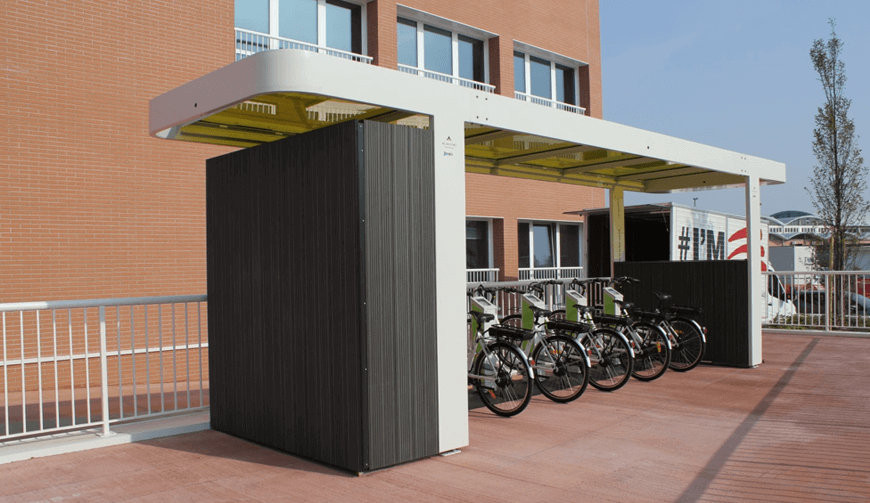In recent weeks, Hera launched the PUNTO.net pilot project, in the Municipality of Castel Bolognese, with the aim of implementing the philosophy of the Circular & Smart City. Moreover, the Company inaugurated the first Biomethane plant, in Sant’Agata, a city in the outskirts of Bologna.
Castel Bolognese, a small town in the province of Ravenna, is collaborating to a project that will represent the reference model for creating smart&circular cities, being as healthy, inclusive and sustainable as possible. Mr. Simone Allegra, head of Project Development in the Innovation and Development Unit at Hera, illustrates the topic.
An overview of the project that is underway in Castel Bolognese
In Castel Bolognese, we are carrying out a wide-ranging innovation project, which will consist of a number of structures and prototypes that will expand urban infrastructures and services. We will test advanced scientific and technical solutions that will lead to a smart management of the city. Through this project, we aim to focus on a set of indicators of urban quality that will help to orientate the decisions of local administrations, in the present case those of the Municipality of Castel Bolognese. We are the main partner and leader of the initiative, which involves the collaboration with the Municipality and the Next City Lab of the Architecture Department of Ferrara.
Progress of the project
On 29 October 2018, in the Roma Square, we started the trial of PUNTOnet, a multifunctional plant that groups together containers for sorted waste collection, a device for controlling environmental quality, a free Wi-Fi connection, while also including a video surveillance and public lighting system. The trial of this technological prototype, connected to the power grid and the data network, will last 6 months and will involve about 40 families. It actually represents the pilot project of our concept of Circular & Smart City, in which we play a key role to support municipal administrations, by directly engaging citizens, with the aim of facilitating the implementation of a technology and resource management model that places People and Environment at the centre of urban development.

Information and data
Based on the collected information, we expect to be able to create smart solutions for waste collection and recycling, draw energetic maps, identify sustainable mobility opportunities and optimise air quality. Hera can analyse data coming from the city, intended as a living organism, where it manages a number of networks and services.
What will happen at the end of the data collection
After the 6-month observation, we will release some sort of “environmental passport”, depending on the measurements taken regarding circularity, safety and smartness of the city. Afterwards, a new 12-month phase of the trial will follow, where the measurement system will find its concrete application. Obviously, there might be a third phase, during which we would work in partnership with other companies that may help us develop new services, tools and solutions.
The new plant for the production of biomethane from organic waste in Sant’Agata Bolognese is now operational
HERAmbiente, waste management Italian leader, for years has being producing biogas for renewable electricity generation. With a 37 million euro investment, we have built a new plant for the production of biomethane from organic waste, inaugurated on 2h October 2018 in Sant’Agata Bolognese: it is the first plant of this kind ever built by a multiutility.
Mr. Andrea Ramonda, general manager of HERAmbiente, is giving us more details about it.

What is biomethane?
Biomethane is a 100% renewable fuel, coming from the upgrading process of biogas, a mix of methane and carbon dioxide obtained using products and sub-products of the agricultural and industrial production chain. Thanks to biomethane, it is possible to avoid the use of fossil fuels and reduce greenhouse gas emissions. Therefore, it allows for meeting the energy production decarbonisation targets set by the Emilia Romania region and required by the National Energetic Strategy.

Sant’Agata plant capacity
The newly operational plant can treat up to 100,000 tons of organic waste coming from sorted waste collection, and more than 35,000 tons coming from collection and pruning in green areas. Our technology for anaerobic digestion and upgrading will allow for deriving from those resources around 7.5 million cubic meters of Biomethane, in addition to 20 thousand tons of compost, a bio fertilizer mainly used in agriculture.
Measurable benefits of the new plant
By using 100 thousand tons of organic waste, we are actually avoiding the use of 6 thousand tons of oil; which would imply the emission of 14,600 tons of carbon dioxide.

Environmental impact of the plant
First of all, we have built the plant on a former composting site and designed it in order to minimise the acoustic and olfactory impact. Furthermore, combustion does not take place with organic products transformation. Architecture wise, we also ensured that the structure blends in with the surrounding area. All in all, the plant in Sant’Agata is efficient, uses cutting-edge technologies and provides a significant contribution on the way towards circularity in the use of resources.















